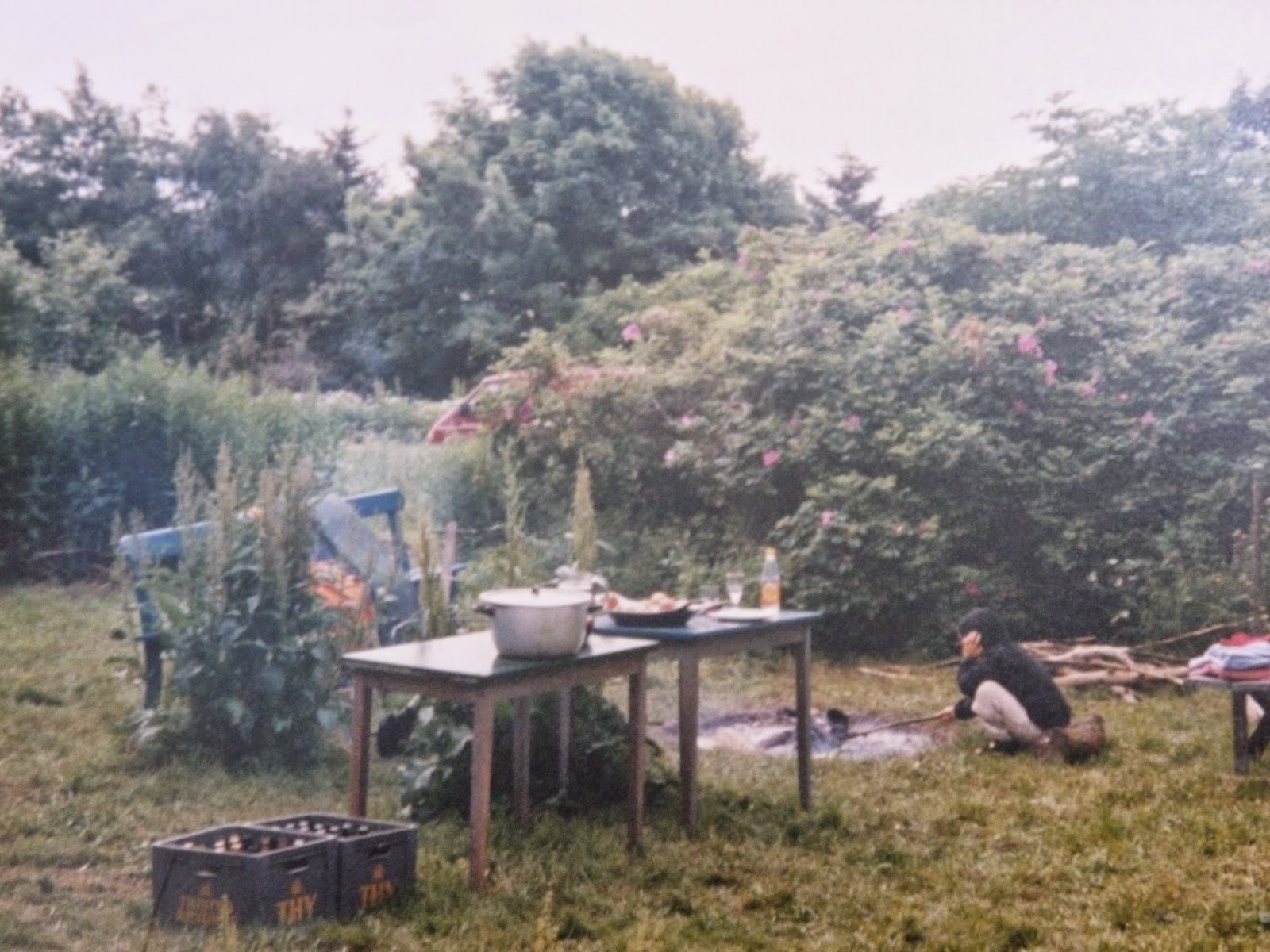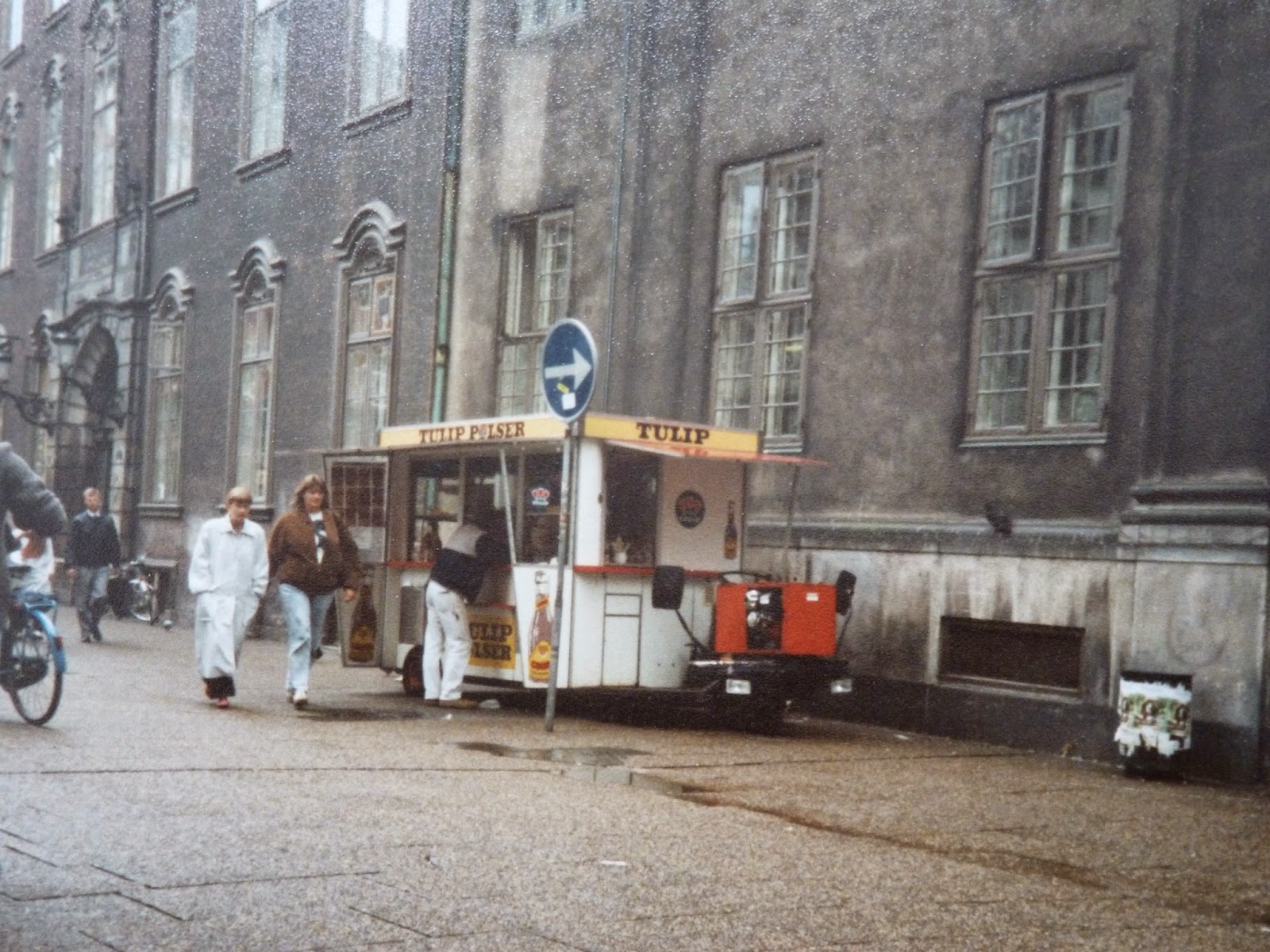Bohr: Heisenberg, I have to say - if people are to be measured strictly in terms of observable quantities...
Heisenberg: Then we should need a strange new quantum ethics.
(Michael Frayn, Copenhagen)
Sunday was a day of Denmark, for good and bad reasons.
Firstly, Copenhagen Zoo killed a baby giraffe that didn’t fit its gene pool,
and secondly, Hugh Fearlessly-Eatsitall visited the country in the second of
his Scandimania series. Bad timing
for Hugh, since everyone was probably too outraged at what had gone on earlier
in the day in the same city to really be prepared to give his show much truck.
And this despite Hugh’s Copenhagen airport transfer being by very
environmentally friendly bike.
As with the first part of the series in Sweden (ABBA, lakes,
paternity leave, state-owned liquor stores, elk), Scandimania in Denmark seemed to be one piece of stereotypical
trivia after another. Danish pastries are called “Vienna bread” (wienerbrød) in Danish. And they taste better (funnily
enough) when hand-made in a specialist Copenhagen bakery rather than when baked
in your local Greggs. The Danish make architecture that reflects their mountain
envy. The Danish make good murder shows. The Danish have wind farms. The Danish
have a world-class foraging restaurant whose owner, surprise surprise, is a
mate of Hugh’s. The Danish pay a lot of tax. Hugh only left out a big box of LEGO
and a side of bacon. I picked up a copy of the Time Out guide to Copenhagen for 50p in a charity shop last week
and I learned almost exactly the same facts from a quick skim through. Oh, and
Hugh was even staying in the one hotel room the guidebook has a photo of. (Room
606 at the Radisson Blu (SAS) Royal Hotel, designed by Arne Jacobsen. Nice work
if you can get it.)
Hugh’s main focus was on the Danish concept of hygge (a very home-based kind of
cosiness that has no literal translation) and the question of why (when
assessed using certain statistical criteria) the blonde, healthy Danes are
rated by the United Nations as the happiest in the world. He concluded that
their happiness was to do with their sense of community and notion of trust.
That they can trust each other and, more importantly, trust their government to
spend their astronomical taxes wisely and provide for their every need. Well,
who wouldn’t want Birgitte Nyborg to be their Prime Minister? (...What do you
mean, she’s not real?)
When I first visited Denmark at the age of 17, I too was
struck by how much the state provided. The daughter of a family I was staying
with was just starting at an efterskole (a
one-year boarding school for 18 year olds where they can explore their
interests, develop their potential and have their first taste of independent
living) similar to the one Hugh visited on his programme, and she took us to
see her new accommodation. I couldn’t believe the gorgeous ground-floor studio
flat she showed us, complete with her own kitchenette and shower room, where
she was going to live possibly for free, or at least for massively subsidised rent. This was long before universities in the UK
started smartening up their hall of residence accommodation and providing en-suite
bathrooms for the conference trade (and therewith sending rents sky high). Long corridors of small rooms invariably
modelled on an urban myth of a Swedish prison, communal showers, no fridges or
cooking facilities, and one pay phone for 300 people was the norm back then.
The concept of hygge
seems to involve large family meals and roaring campfires, a similar party
atmosphere to the one Hugh always tries to create at the picnics which are the
prerequisite end to all his River Cottage programmes. In this version of
Denmark, the sun always shines. Just like in Hugh’s Dorset, which currently
probably only has its highest hillocks peeping out from the flood.
 |
| Danish hygge, North Jutland |
I have only visited Denmark in summer, so my memories of it
are indeed of a very sunny place, of rolling tussocky sand dunes, marshy
flatlands punctuated only by church spires and wind turbines, and big blue skies.
But there were cold winds fuelling those turbines, so I don’t remember spending
a whole bunch of time outside. Apart from on my most recent trip (ten years ago
now), a crazy overnight visit to a midsummer party in the North Jutland near
Nykøbing Mors, where being outside was compulsory. Having travelled far too light on my Ryanair flight to Aarhus, I
sat and shivered next to the campfire where we were roasting our pølser (sausages), and had to borrow a jumper, and a pair of woolly socks to wear beneath my sandals. In those days, I
belonged to the namby-pamby Londoners who never know cold. Thank goodness I now live up north in my own country, away from the sweat of the Smoke.
 |
| Illegally parked at the Little Mermaid |
The Danish people I spent most time with lived in South
Jutland near the German border, and seemed to have a dislike of Copenhageners
(or at least of their accent), so it’s hard to know whether they or the people
Hugh was talking to were the more typically Danish, or who these studies of
happiness are meant to represent. The people I knew were lovely, gentle folk
who could not have been more hospitable, and refused to get even a little bit
cross when I managed to crash their car. Blonde? Yes, all of them. Healthy?
There was a lot of smoking and beer-drinking going on, and they enjoyed using
our customs allowance on runs over the border into Germany to stock up on cheap
booze (our reward being a visit to the incredible Nolde museum at Seebull). But their home-cooking (often with produce from the garden) was superb.
Happy? Yes, probably. “Content in a very earnest way” is maybe a better way to
describe it.
The Danish always struck me as a nation very proud of
themselves, but it was a gentle pride that you wanted to share. (Though maybe not some
of the older generation's attitudes towards immigrants.) They exhibit a true contentment
with themselves and who they are. The Danes have a deep love for their flag,
which flutters high in everyone’s gardens, and somehow its red and white colours
all their buildings and scenery. But the flag always manages to avoid the
imperial or militaristic connotations of a Union Jack or Star-Spangled Banner.
Having visited the city separately and become addicted to The Bridge and The Killing, my husband and I have a current yearning to return to
Copenhagen. It seems odd that series about serial killers should have that
effect on us. But hyggelig and happy
are certainly two things that we strive to be, and my Time Out guide ensures me
of the city’s family friendliness (despite our daughter being just a bit too
young to be bribed by the promise of the biggest Lego shop in the world).
Conveniently, SAS is about to launch direct flights from Leeds Bradford, our
nearest airport. But after the sad fate of Marius the giraffe this past
weekend, I think we’ll have to give the zoo a miss.
 |
| Nyhavn in Copenhagen, made out of Lego |



No comments:
Post a Comment